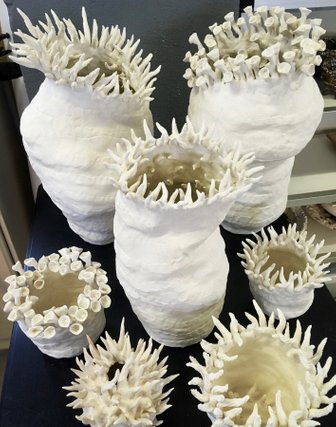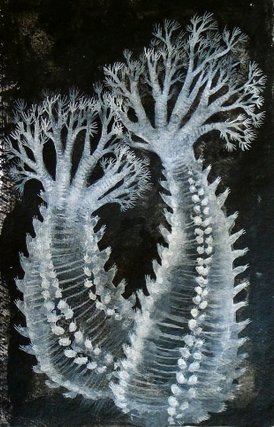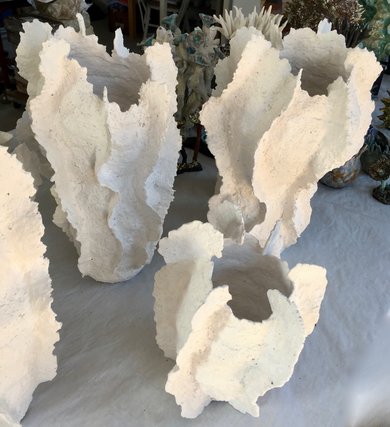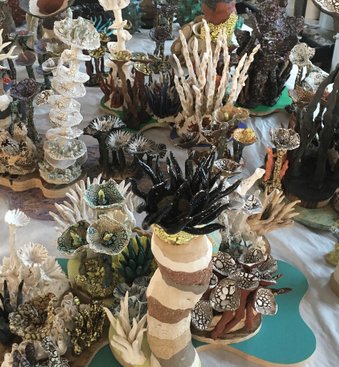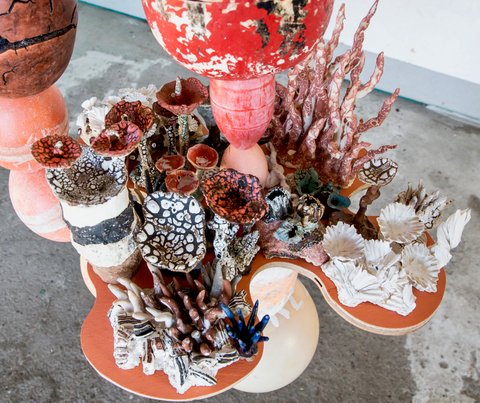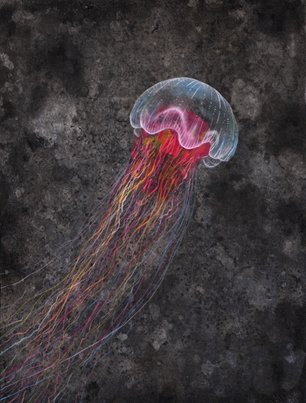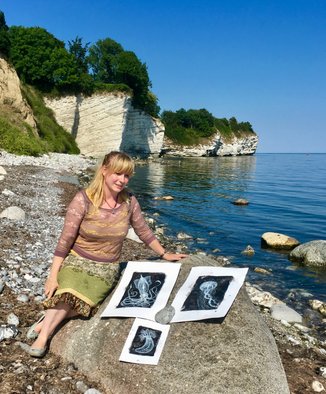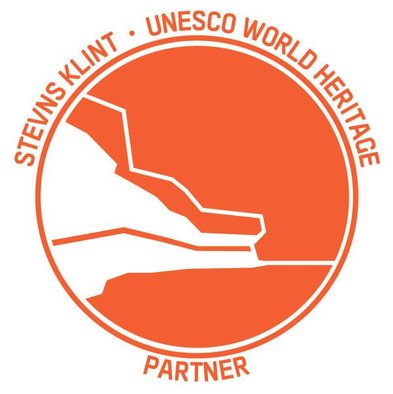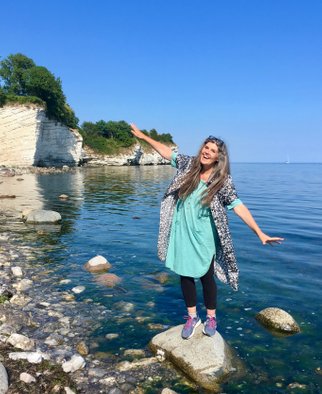Kridthavet.dk
Welcome to the story of the Cretaceous Sea
UNESCO world heritage.
In 2014 the narrow grey layer, the “fish clay”, visible in Stevns Klint, was added to the world heritage list by UNESCO. The clay marks the time of the great mass extinction – the period during which dinosaurs walked the earth about 66 million Years ago. At that time, Stevns was a deep and strange prehistoric ocean, filled with odd creatures and great monsters with sharp teeth. Amongst these creatures, lived the microscopic Coccoliths, shedding their little chalky shells to the ocean floor, for millions and millions of years. The silt became chalk, and the chalk became more than 800 meters deep in some places to form what we, today, see as Stevns klint.
Stevns Klint – where we live.
It makes an impact on the mind, to live so close to the klint and to the ocean. The massive chalky cliffs stretch for 28 kilometers along the raw nature of the coast. The many layers are laid out like waves as time left them. The geology and dramatic history of the great mass extinction, hiding in the narrow fish clay layer, represent stories waiting to be told.
We welcome visitors to our workshops on the fishing harbour in Rødvig, where they can experience the creative process, witness the work we do in the convergence between art, nature and natural science, and look at the finished pieces.
Cooperative art.
The cooperation between ceramic artist Trine Birgitte Bond and Illustrator Lykke Bianca started as a common fascination of raw nature and the prehistoric life of the cretaceous ocean.
We work together to illustrate our interpretation of this fascinating and incredible prehistoric ocean, a story that goes back 66 million years, and represents a very special piece of Danish history.
An interesting thing, as an artist, is to work in the field between art, nature and natural science; to try to interpret and be inspired by this micro and macro ocean. Sometimes we follow the strict science and fossil findings, where the ancient life is illustrated. At other times we set our minds free and work on a feeling of the wonders of nature. We wish to develop our partnership and our art, and welcome collaboration with relevant partners such as museums, exhibitions, geologists, etc.
Ceramic Trine Birgitte Bond:
I work mainly on creating a chalk and coral reef in ceramic and porcelain. My organic and ceramic works, revolve around the many unique life forms that lives in the cretaceous and coral reefs. It’s like diving in to a reef of eternally changing shapes and colours, an ocean of beauty and wonder, which blows the mind. Filled with organic structures, shapes and colours, they can be seen solitarily or in groups. I enjoy capturing an ocean of details in Coccoliths, bryozoans, crinoids and ocean sponges. I take an experimental approach to my work and use many types of glazins and clays.
My workshop is at the fishing harbour in Rødvig, just between the ocean and the Klint. My ceramic stories are inspired by the beauty of nature, and the structures and frail mortality of the oceanic life forms.
In 2017 I was accepted to display at the “Den Frie” fall exhibition.
Illustrator and artist Lykke Bianca.
I grew up beside the Klint, and have fantasised about the life in the ancient cretaceous sea since I was a child. I have illustrated this incredible prehistoric sea, making different kinds of pictures – some painted in Gouache, and some in acrylics.
The gouache paintings on paper are based on some of all the microscopic, cool, fragile, beautiful and fascinating life forms that once lived right here. Millions of years ago. Gouache’s transparent characteristics and ability to highlight the smallest details make it the perfect medium for this work.
The acrylic paintings I have made show the largest animals that were found here as fossils. I worked in close cooperation with the museum director and world famous geologist, Jesper Milan, to ensure the most precise details were reflected accurately in my work.
I am educated from the Design School Kolding.
Geomuseum Faxe.
Life in the creatacious ocean at Geomuseum faxe. An exhibition that the museum called “an exhibition within the exhibition”. We cooperated with Museum Director, Jesper Milan, to make an artistic story about the cretaceous sea. The exhibition ran for 3 months in the summer of 2018, as a part of their exhibition “Chalk, limestone and the great mass extinction”.
